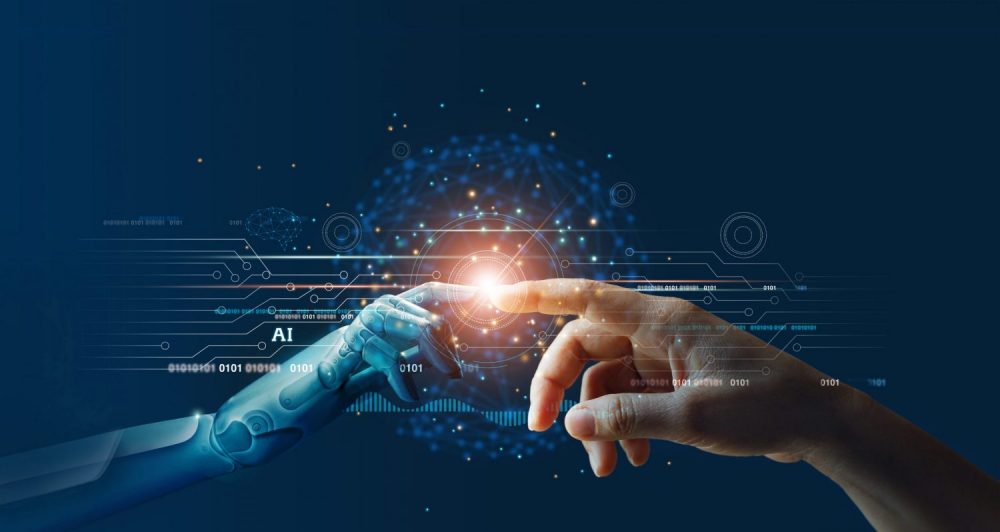As Artificial Intelligence is becoming increasingly implemented into our everyday lives, we must wonder: is it possible to live with it or will we reach a point where it replaces us?
We have already seen several cases especially within the Video Game industry where game developers, artists and designers are being laid off and replaced with Artificial Intelligence as a way for these colossal companies to cut the ever-rising costs of creating AAA titles and greedy CEO’s wanting to maximize profit margins at the expense of people’s livelihoods.
We’ve also seen it have a huge impact on social media with a plague of AI created shorts on YouTube, even giant pages on social media are sharing multiple AI generated videos every day. Granted, you can tell they aren’t real videos, but this is having an underlying impact on genuine video creators on these platforms having to compete with the millions of views and clicks.
You can even generate music with Artificial Intelligence and upload it to Spotify If you really wanted to and with music, it’s even harder to tell the difference between genuine instruments and AI generated as there’s nothing to see and with studio mastering these days music sounds completely different in a live setting anyway.
Where we have really seen the impact of AI is particularly with images. Entirely generated images and editing that isn’t quite there with making it look like a real thing, but it isn’t far off. Graphic designers are taking hits in many industries as AI does our jobs for us, in a fraction of the time and there are many free resources out there which anybody could use.
Free apps such as ChatGPT are available at literally anybody’s fingertips with a smartphone and can be used to even write entire stories. As an example of this I have given it a prompt on my mobile device to see what it would write. Here is that prompt: “Write a short story about a boy from England who went on holiday to Spain for Christmas and was playing on the beach on Christmas Day.” The result can be seen below, which took an entire 20 seconds to generate:
Christmas on the Costa del Sol
Jamie was ten years old and had never spent a Christmas away from home. Back in Manchester, Christmas meant frosty windows, hot cocoa, and wrapping himself in a blanket while the wind howled outside. So, when his parents announced they’d be spending Christmas in Spain, he was puzzled.
“Spain? For Christmas?” he asked, tugging at the corner of his advent calendar. “But what about the cold? The snow? The Christmas jumpers?”
His mum just smiled. “You’ll see. It’ll be different, but magical.”
So here he was, on Christmas morning, standing barefoot on a golden beach in Málaga, his Santa hat perched jauntily over his sun-bleached hair. The sky was a deep blue with not a single cloud, and the sea sparkled like tinsel in the sun.
Jamie dashed across the sand, his red swim shorts flapping, a plastic spade in one hand and a bucket in the other. His parents lounged under a parasol, sipping coffee and smiling at his energy.
He started building a sandcastle—not just any sandcastle, but a Christmas castle. He shaped towers, carved windows, and even added a moat. Then he topped it with a stick he’d found, decorating it with seaweed like tinsel. For the finishing touch, he took off his Santa hat and placed it carefully on the tallest turret.
“There,” he said proudly, hands on hips. “The Castle of Christmas!”
Suddenly, a voice called out in Spanish, “¡Qué chulo!” A local boy, about his age, had wandered over. He pointed at the castle, smiling. Jamie smiled back.
“I’m Jamie,” he said, pointing to himself.
“Mateo,” the boy replied.
And just like that, they were building together—laughing, miming, mixing Spanish and English in a language of fun. They decorated more towers, chased each other with handfuls of wet sand, and ended up collapsed in a heap, breathless and happy.
As the sun began to dip, painting the sky with pink and orange, Jamie looked out over the water, his Santa hat now a little soggy but still perched on the castle.
“This,” he thought, “is the weirdest, warmest, most wonderful Christmas ever.”
And he meant it.
Now ask yourself, could you tell the difference between the above text if it was generated by Artificial Intelligence or written by a genuine Author like Enid Blyton if I hadn’t told you beforehand? This is the scary future that is in store for us, where we don’t know what’s genuine and what isn’t, and this future is impacting many forms of art and other industries.
Now that’s not to say everything about AI is bad, like many things when it is used in moderation it can be quite useful. Like touching up a selfie to get rid of unsuspecting photobombers in the background or making a preexisting font on the page of a magazine stand out more with visual effects. But when it starts creating these images from a little text prompt and posing as a real image, then it becomes a problem, merging fake with reality.
People won’t hire professional photographers or artists anymore as they can just do it from their phones, and that’s a sad but realistic future with the way we are going in terms of using Artificial Intelligence. Microsoft have just made an $80 Billion investment into AI, laying off 9000 employees in the process, and for what? A shortcut around creativity.
Even writing this blog post in WordPress, I have a panel on the right hand side of the screen to generate title options, images and even feedback.
Creativity is an outlet of expression and emotion, it is human, don’t become a robot too.

